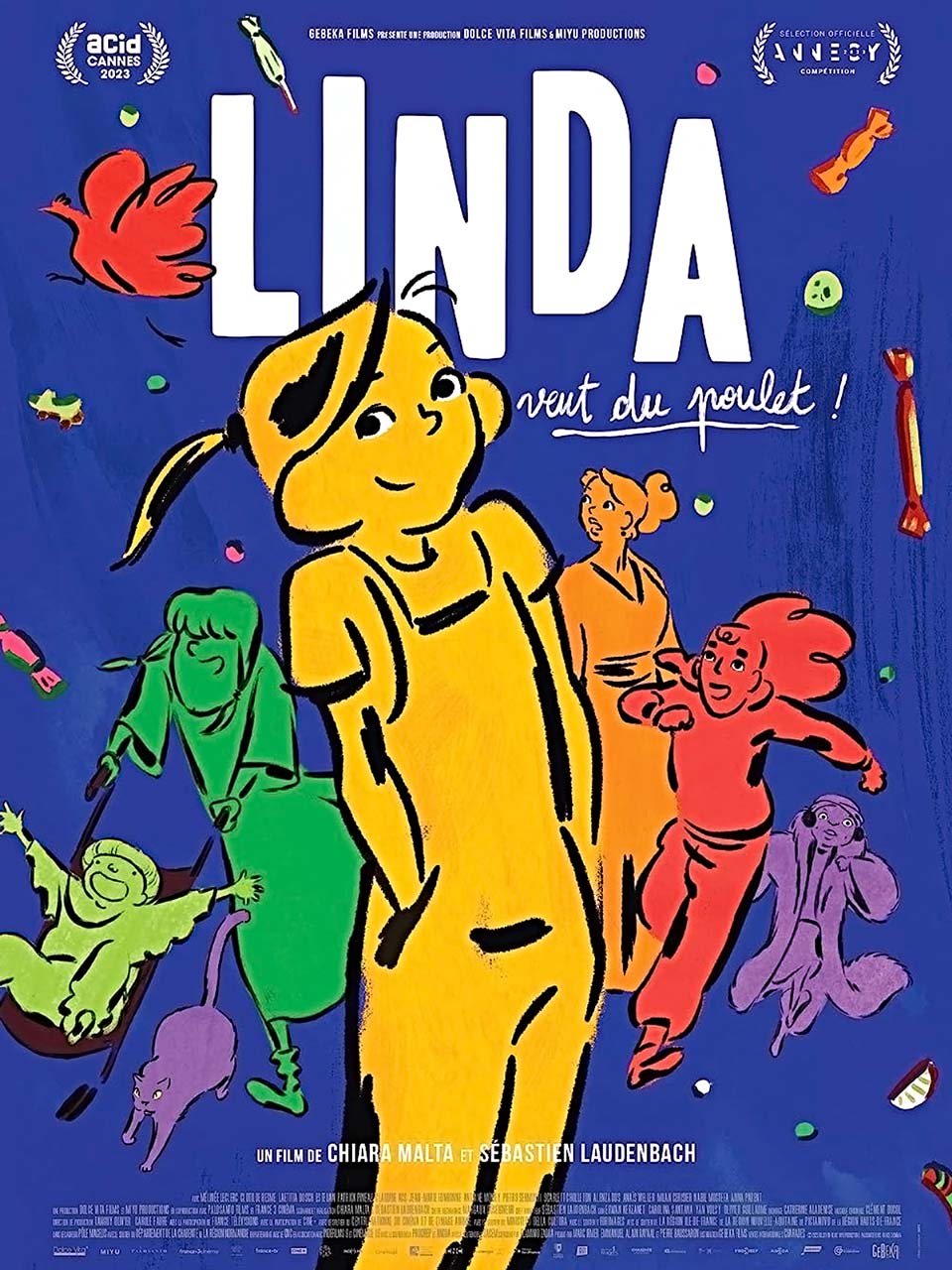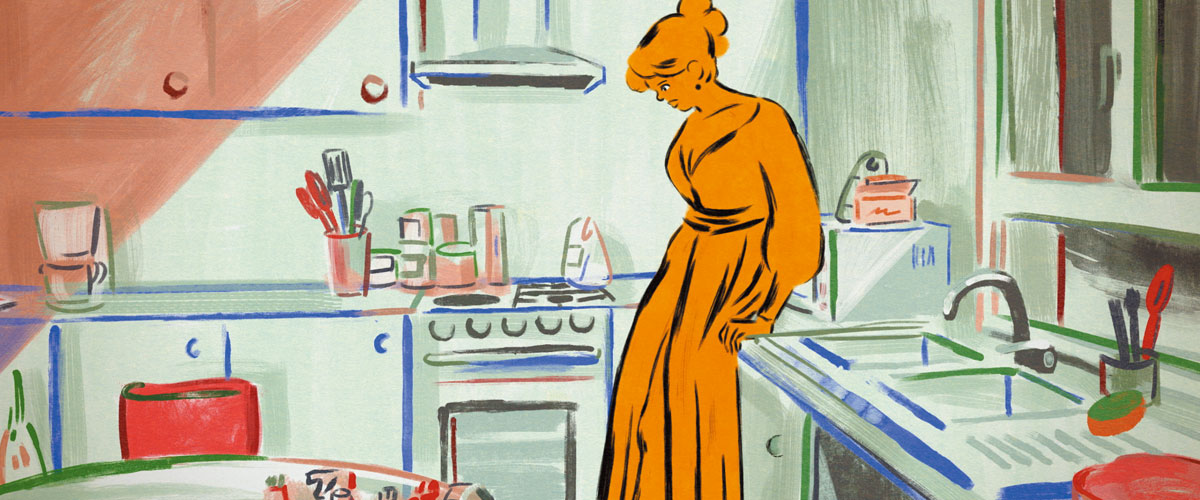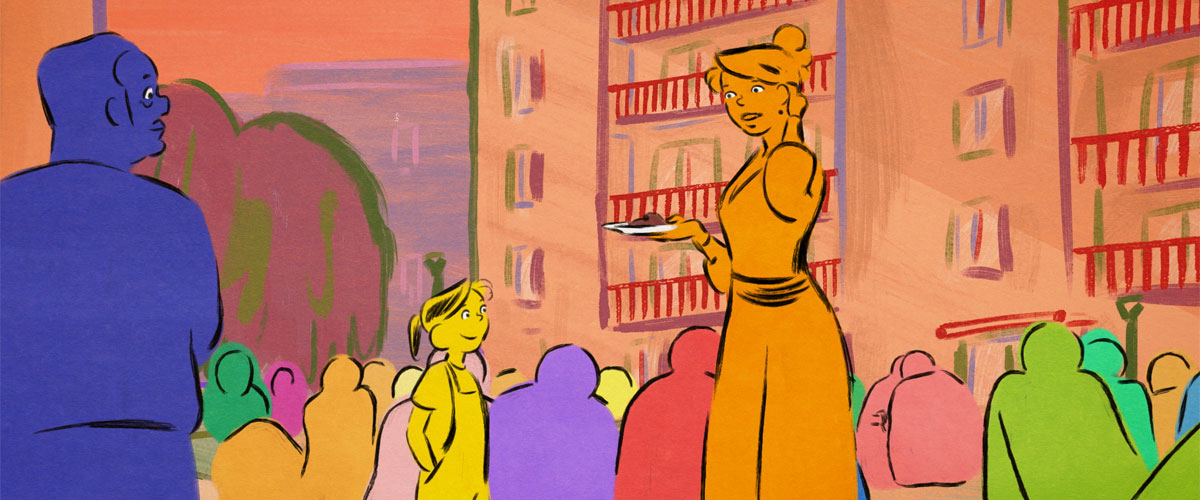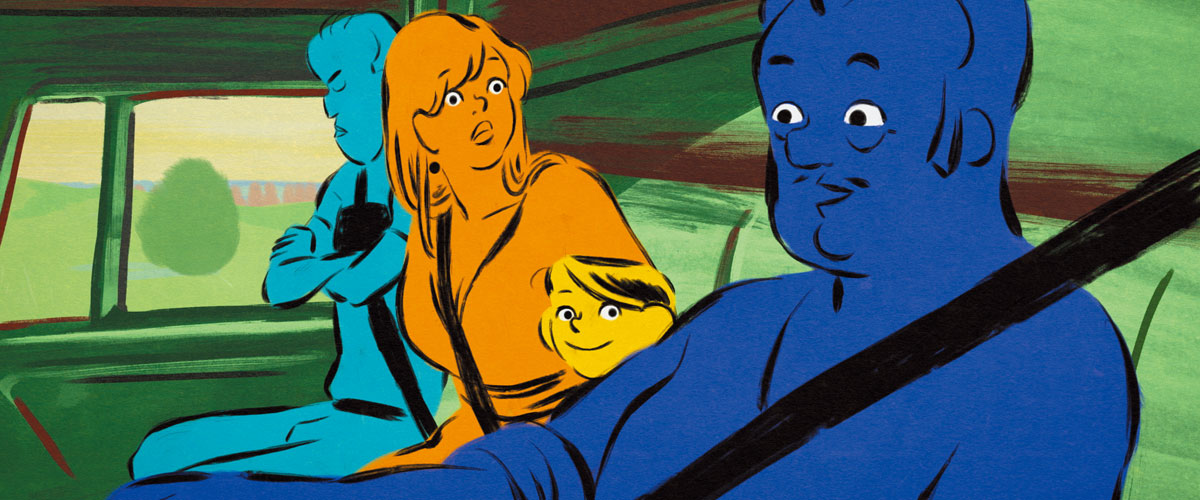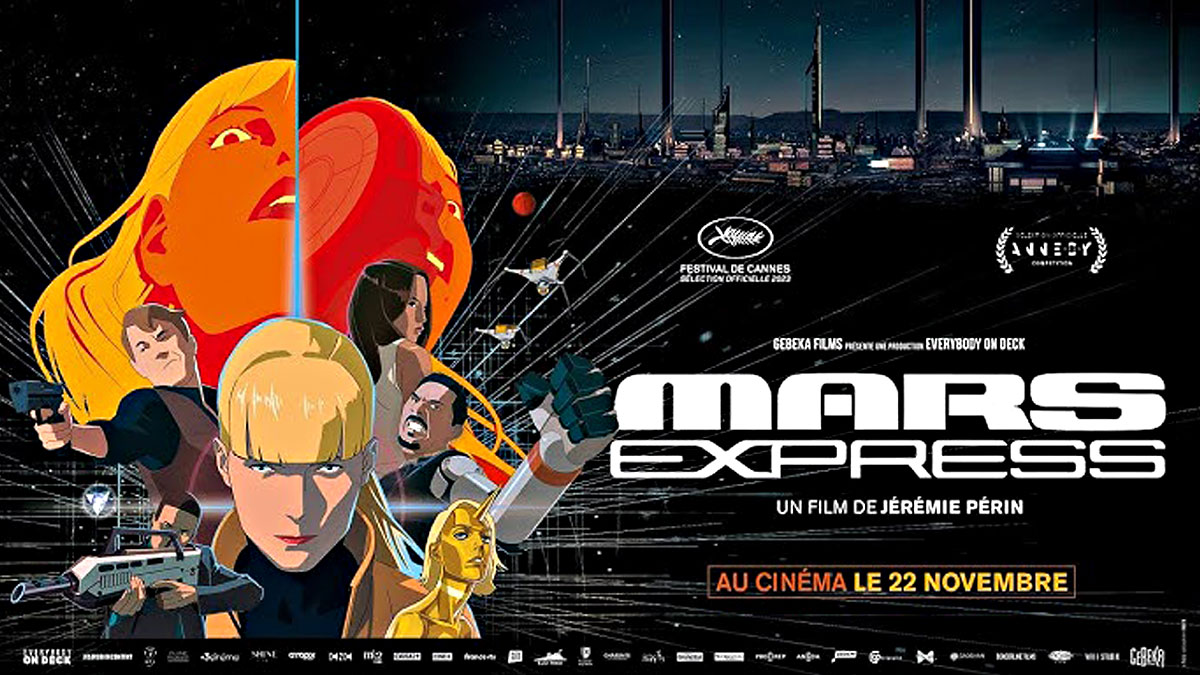Synopsis
Paulette realizes she has unfairly punished her daughter Linda. To make up for it, she promises to cook her a chicken with peppers, even though she cannot cook at all. But where to find a chicken on a strike day, when all the shops are closed?
Film credits
Directors: Chiara Malta and Sébastien Laudenbach
Scriptwriters: Chiara Malta and Sébastien Laudenbach
Producers: Marc Irmer (Dolce Vita Films, France), Emmanuel-Alain Raynal (Miyu Productions, France), Pierre Baussaron (Dorje Film, Italy), and Flaminio Zadra (Dorje Film, Italy)
Music: Clément Ducol
Target audience: Kids, Family
Technique: 2D digital
Running time: 75 minutes
Chicken for Linda! is a heart-warming animated feature, with impressive visuals, targeting a family audience. The film has been nominated for the official feature film competition at Annecy International Animation Film Festival 2023.
The narrative with a universal appeal is modest in content and structure, yet packed with several important messages behind it. Starting from an everyday event between a daughter and her mother, it naturally depicts incidental occurrences with the various people in a local community, portrayed in an emotionally rich and detailed manner with the right amount of comedy within its unique story setting.
The visual style of Chicken for Linda! embraces the beautiful, abstract style inherited from Sebastian Rodenbach’s previous feature film, The Girl Without Hands, and also has child-friendly visual elements, such as a colourful and appealing visual expression of emotions. It is a good combination of having the aesthetics of artistic animation, and the visual appeal of commercial animation for children that makes the film as an innovative and unique visual work.
We interviewed the two directors, Chiara Malta and Sébastien Laudenbach, on the story behind Chicken for Linda!
Interview with Chiara Malta and Sébastien Laudenbach
Hideki Nagaishi (HN): What kinds of things are you hoping the audience will bring back from this film?
Chiara Malta: We made this film primarily for children, although adults will also find something to enjoy. We wanted to make a film that was free, joyful, and advocated disorder; a film that was both amusing and tender, funny and beautiful. We hope that the audience will leave the cinemas with the feeling that they’ve lived and felt it all.
Sébastien Laudenbach: We often have the impression that the vast palette offered by animated cinema is used extensively in short films, but is reduced as soon as we move on to feature-length films, whose language is often similar to that of live-action (even if there are plenty of counter-examples, including the latest Spider-Man). We wanted to play with what animation has to offer. This playful aspect is important to us.
HN: Where did the initial idea of the film come from? And what did you take care in the most when you developed the whole story?
Chiara Malta: Our starting point was the injustice that all children experience on a regular basis. Unfairness and accidents. To be a child is to be in a world for which we are not adapted, with a body that is initially clumsy: we fall, we get hurt, but we start again to move forward.
Sébastien Laudenbach: This notion of accident was a driving force at every stage, from writing and directing to animating and finishing the film. We wanted to be open to the directions the film would take us. Of course there is a certain amount of control on our part, but it’s not 100%.
HN: What was it like to co-direct the film? What kinds of good creative chemistry or creative stimulation did you experience?
Chiara Malta: Everything was done together, from the conception of the film right through to the end.
Sébastien Laudenbach: Being two, in full confidence, means we can rely on each other. We’ve known each other for a long time and have already worked together. The film is the fusion of our two personalities.
HN: Sébastien, I found that this film’s visuals have the same aesthetic as with your previous animated feature The Girl Without Hands, and at the same time there are visual elements that are unique to this film that are cheerful, joyful, and cute, and matches with the film’s story. I’m curious about what did you take care in to naturally integrate the two visual characteristics. Could you please let us know how you created the visual design of the film?
Sébastien Laudenbach: Here too it was a joint decision. The Girl Without Hands opened up a playground where we could express ourselves freely. We both realised that the ‘unfinished’ aspect of animated drawings allowed us not only to cut costs, but also to create a rich and lively visual style.
Chiara Malta: If the film is so joyful, it’s not just because of the animation, it’s because of the combination of all the elements that make it up: the singular approach to animation, of course, which also allows a certain amount of freedom to the whole team (a possible accident), but also the liveliness of the voices, which were thought out and recorded as ‘snapshots’ (in live sound), the power of the colours, and so on. We worked with Margaux Duseigneur on the sets (she had worked on those for Florence Miailhe’s The Crossing (Original French title: La Traversée)). Her approach to shapes and colours is incredibly stimulating.
HN: It was impressive that each character is only using a single particular colour, and several scenes of the blocks of apartments are filled with a variety of colours. How did you come up with that visual expression and what was your intention as a director?
Sébastien Laudenbach and Chiara Malta: Play the game! Using one colour per character turns the film into a game board with stickers. This gives you a lot of freedom (and reduces costs).
HN: I would like to ask you about the music in the film. How was the collaboration with Clément Ducol and what did you take care in the most on the music for the film?
Chiara Malta: The songs are used to tell the story, to get to know the characters better or to move the action forward, particularly in the last song. We worked with Clément (whose arrangements we loved for Leos Carax’s Annette) from the animatic stage onwards, as the editing had to interact with the music.
Sébastien Laudenbach: The music was so important that we waited for it to be composed in order to stage certain moments. It really inspired us.
HN: I want to ask you about the several songs that were effectively included into the film. What did you take care in the most when writing the lyrics and making the animation that visually represents the lyrics by using the advantages of animation as a visual storytelling medium?
Sébastien Laudenbach and Chiara Malta: It’s all about the characters!



